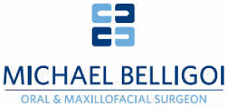During early pregnancy, separate areas of the face develop individually and then join together, including the left and right sides of the roof of the mouth and lips. However, if some parts do not join properly, sections don’t meet and the result is a cleft. If the separation occurs in the upper lip, the child is said to have a cleft lip.
The palate is the roof of your mouth. It is made of bone and muscle and is covered by a thin, wet skin that forms the red covering inside the mouth. You can feel your own palate by running your tongue over the top of your mouth. Its purpose is to separate your nose from your mouth. The palate has an extremely important role during speech because when you talk, it prevents air from blowing out of your nose instead of your mouth. The palate is also very important when eating. It prevents food and liquids from going up into the nose.
As in cleft lip, a cleft palate occurs in early pregnancy when separate areas of the face have developed individually do not join together properly. A cleft palate occurs when there is an opening in the roof of the mouth. The back of the palate is called the soft palate and the front is known as the hard palate. A cleft palate can range from just an opening at the back of the soft palate to a nearly complete separation of the roof of the mouth. After the palate has been fixed, most children will immediately have an easier time in swallowing food and liquids.

